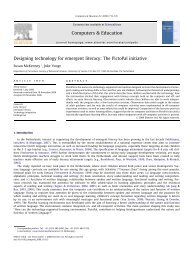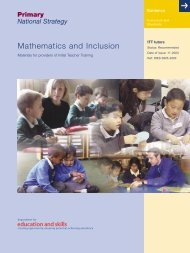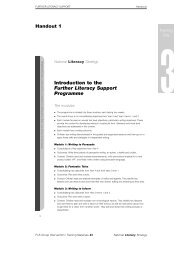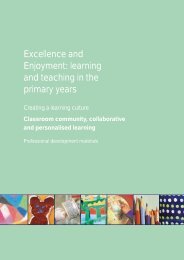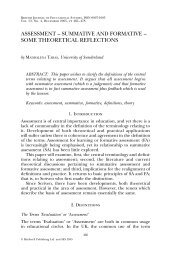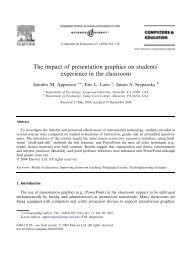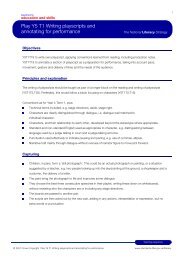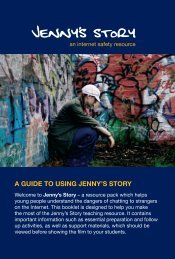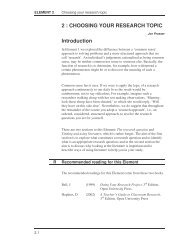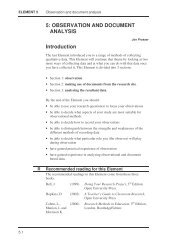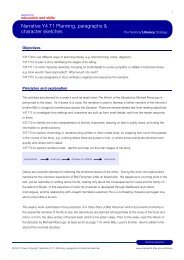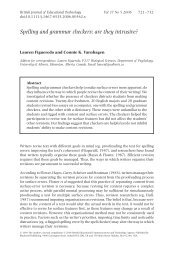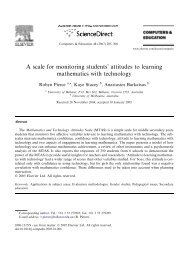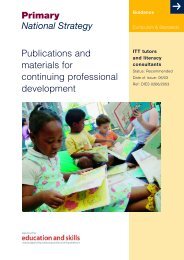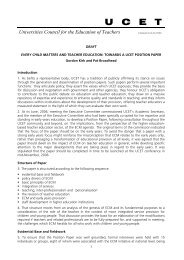Module 2: Written feedback - PGCE
Module 2: Written feedback - PGCE
Module 2: Written feedback - PGCE
Create successful ePaper yourself
Turn your PDF publications into a flip-book with our unique Google optimized e-Paper software.
Handout 4.2.3<br />
Task B<br />
The following example of work is from Fiona’s logbook. All pupils complete this type of logbook<br />
at the end of the week in Key Stage 3. Logbooks provide valuable information about what the<br />
pupils have learned. Some work is marked in detail as indicated below because these items<br />
have been identified as milestones in all pupils’ learning. The objectives are shared with pupils<br />
and the teacher uses the expected pupils’ outcomes to interact with pupils while they complete<br />
their logbooks. This can now be related to the yearly teaching objectives for Year 7.<br />
The lesson objectives are:<br />
To be able to use a simple particle model to explain:<br />
• why diffusion only occurs in liquids and gases;<br />
• what happens when air is heated in a can with a lid.<br />
(These are shared with pupils.)<br />
The expected pupils’ outcome is a way of showing how pupils of different ability may<br />
demonstrate their achievement.<br />
A Uses the correct terminology to describe the sequence of the process when:<br />
• two different gases diffuse;<br />
• air expands and pushes and releases the lid of the can.<br />
This is broadly related to level 4.<br />
B Explains using a simple particle model or using drawings:<br />
• how the particles in a gas are constantly moving, bumping into each other and the walls of<br />
the container. When two gases are brought together such as bromine and air, the particles’<br />
continual movement allows them to gradually mix together. By the end, the particles of air<br />
and bromine have completely mixed. This process occurs independently of the density of<br />
each gas. Start to relate the process of diffusion to liquids.<br />
• how air expands when it is heated. The particles move faster and faster as the temperature<br />
increases. Finally, the number of collisions on the lid is too great and it is released.<br />
This shows aspects of the yearly teaching objectives for Year 7 and is broadly related to level 5.<br />
C Is confident in explaining all the outcomes broadly related to level 5. In addition can explain or<br />
use drawings to show:<br />
• why the structure of the solid prohibits the process of diffusion occurring;<br />
• how the increase in energy of the air particles is linked to the increase in the number of<br />
collisions between particles and the walls of the can. This increases the force on the walls of<br />
the can and its lid. Finally, the force is strong enough to release the lid.<br />
This shows aspects of the yearly teaching objectives for Year 7 and is broadly related to level 6.<br />
27 Unit 4, <strong>Module</strong> 2: <strong>Written</strong> <strong>feedback</strong> © Crown copyright 2004



